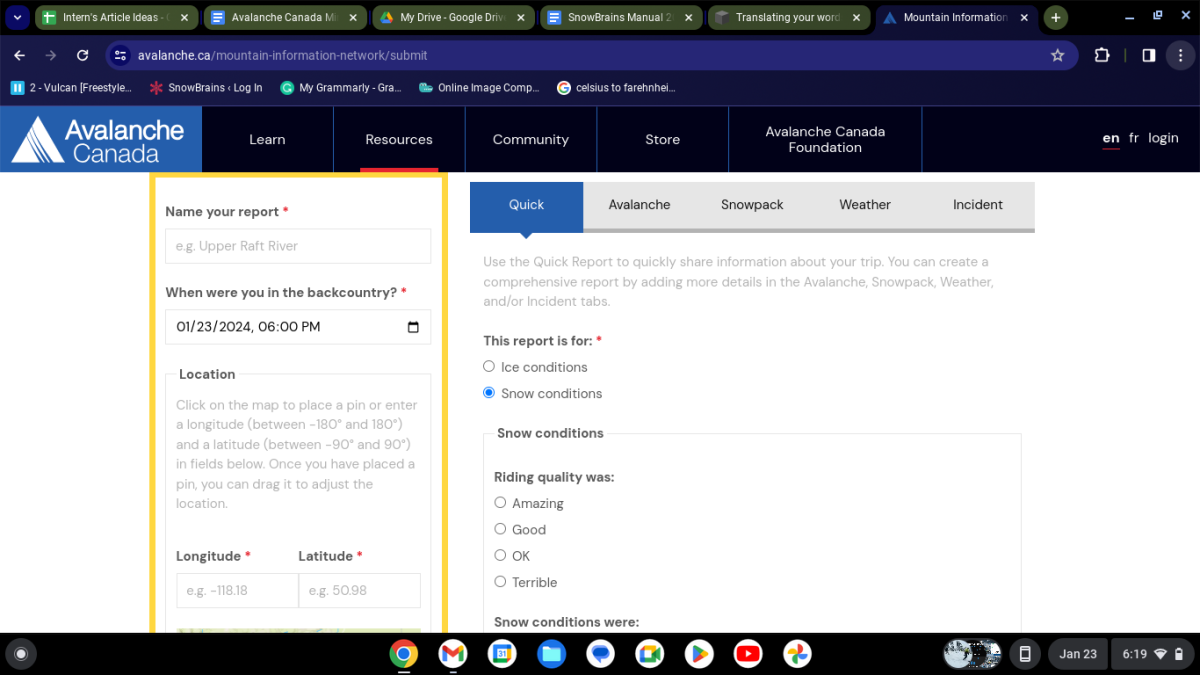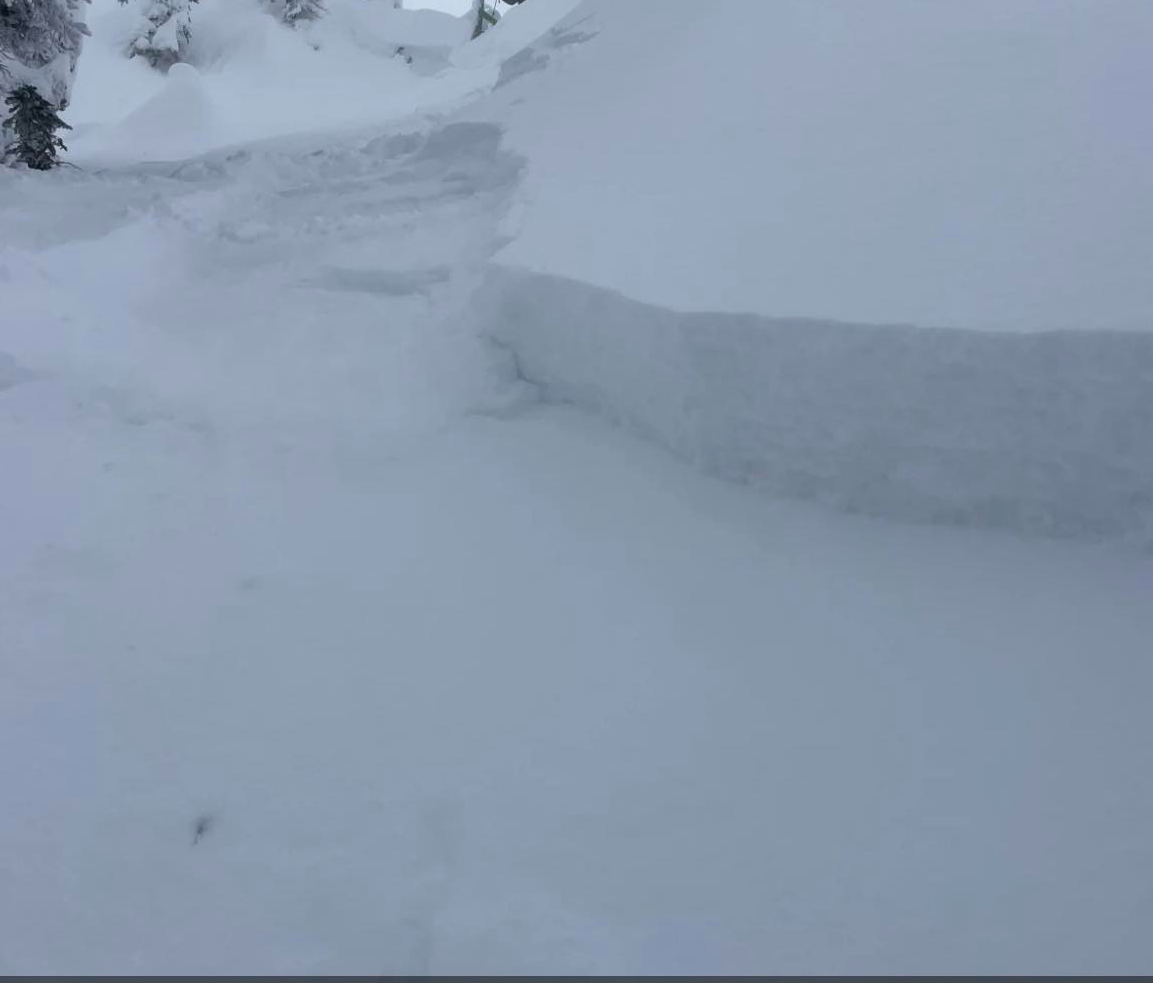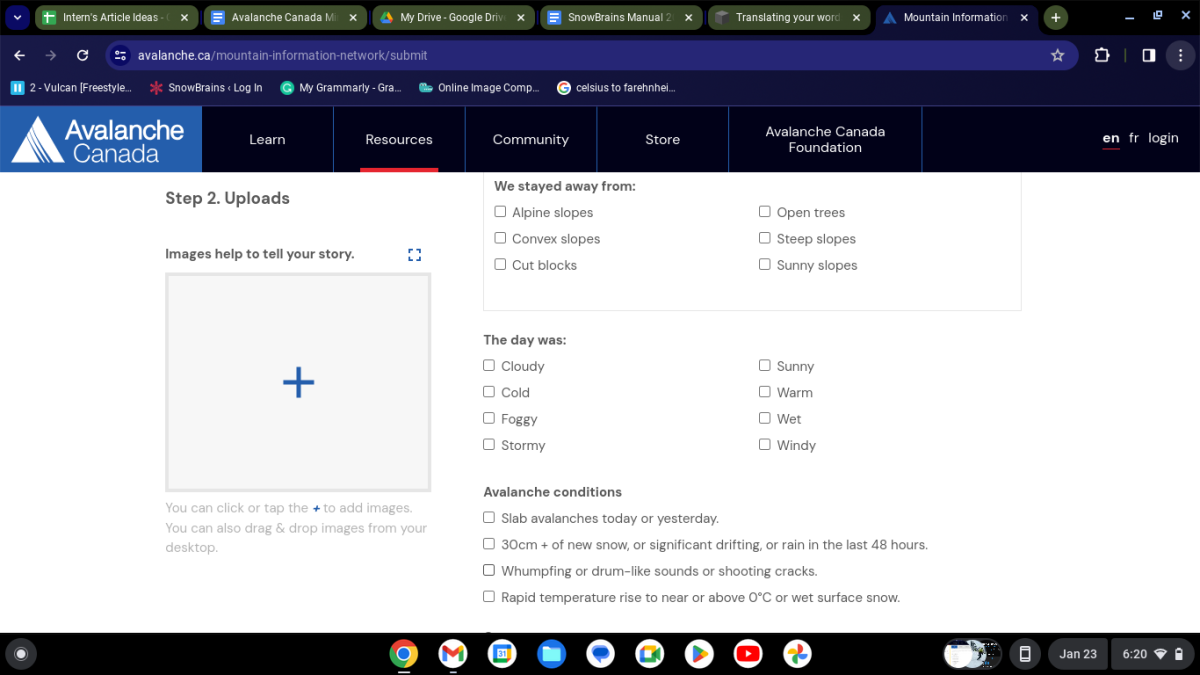
Did you play in the snow today — then say what you saw.
Avalanche Canada is looking to skiers, snowboarders, and snowmobilers for help with reporting snow conditions across the country. For those not aware, Avalanche Canada (‘AVCAN’), is responsible for avalanche forecasting across all the mountain ranges of Canada. With such a huge area to cover, and only a limited number of field teams, it needs help from back country users.
The website at is already a morning meeting staple for guides, ski patrollers, highways avalanche techs, and other avalanche professionals across the nation. It has also become, in recent years, a resource for all back country recreationalists. This has grown due to the courses created for recreational backcountry users by the non-profit organization. The Avalanche Skills Training (‘AST’) courses use the online avalanche forecast as one of the main tools in their decision making matrix. As a back country skier, I will look at it every day, even if I’m not skiing that day. With the snowpack constantly changing, it is a valuable season-long resource. The organization has been putting out these forecasts since 2004, first as the Canadian Avalanche Center, before becoming Avalanche Canada in October 2014.
Now the organization is asking for some help. On the website, they created the Mountain Information Network (‘MIN’). This is a simple interface allowing anyone recreating out in the wilderness to share their observations on the weather, snowpack, riding quality, and any other information they feel is pertinent.

The smallest amount of information could be vital, according to Avalanche Canada. For example, a small change in wind direction could cause loading on a start zone that wouldn’t usually become loaded. The more information gathered, the more accurate the forecast. So even if you just went and meadow skipped all day, put in a MIN, because that’s more information. Shooting cracks from your skis? Icy skin track that suddenly got easier at a certain elevation? Write a MIN.
Wendy Lewis, from Avalanche Canada, kindly agreed to answer a couple of questions.
Q: Can anyone fill one in? Anyone can! You don’t need any training or level of experience to fill one out. It can be your first backcountry trip or your hundredth, we just want to know what you saw. I’d encourage everyone to submit a MIN report and to start reading them to learn about conditions. A lot can change in a day or a week, and MIN’s are a great way to stay in touch with what’s happening in the backcountry.
Q: What are the most important things to fill in? Honestly any information you can provide is helpful. The basic report option is designed to share key observations, you just select conditions out of a list of prompts and add your comments. Even if you can provide just one piece of information, it’s still worth submitting to the MIN. And photos, as they say, are worth a thousand words. Don’t know how to describe what you saw, just show us.

Q: Do you need to have avalanche education to fill one in? Not at all. MIN reports are designed for any backcountry traveler to fill out, regardless of your training or experience. We have a professional information exchange for all industry operators to contribute their information to, but the MIN is for you -the ski touring fanatic, the weekend warrior, the occasional tourer. We don’t care if you sled, ski, snowboard, snowshoe, ice climb, or anything else
Q: Anything else AVCAN would like to share regarding MIN reports?
- Backcountry users posted nearly 4,000 MIN reports last season. More and more users post to the MIN each year.
- MIN reports are popular among backcountry users – last season’s MIN reports collectively had over one million views on the website.
- Our MIN of the Week social media contest uses prizes and recognition as an incentive to encourage people to contribute to their backcountry community.
- Our field teams also create and post MIN reports on a weekly basis for their regions as they are located in data sparse locations.
- We actually do read every single MIN report! Our forecasters review them daily.
- If you were involved in an avalanche, please still share the basics of what happened. Others can use this information to help their decision making and this is important information for our forecasts. As backcountry users, we can learn so much from this.
One thing I hear a lot is that people don’t want to give away their secret stashes. We understand the hesitation, however you can still fill out a basic or in-depth report without telling us the exact location. Put the pin/GPS coordinates on the highway, at the trail head or at a nearby lake so we know what region or area you’re in, and provide the elevation and aspect with your observation. We don’t want to crowd your favorite places, we just want your beta.
As a backcountry user in a zone covered by Avalanche Canada I check the MINs every time before I go out, and my touring partners and I try to write one every time we return for a tour. Full transparency though, we don’t always manage to get one done. It is not something that has become a part of our debrief, although, it easily could be. It’s so easy you could do it over a beer whilst waiting for your poutine to come out at the bar.
